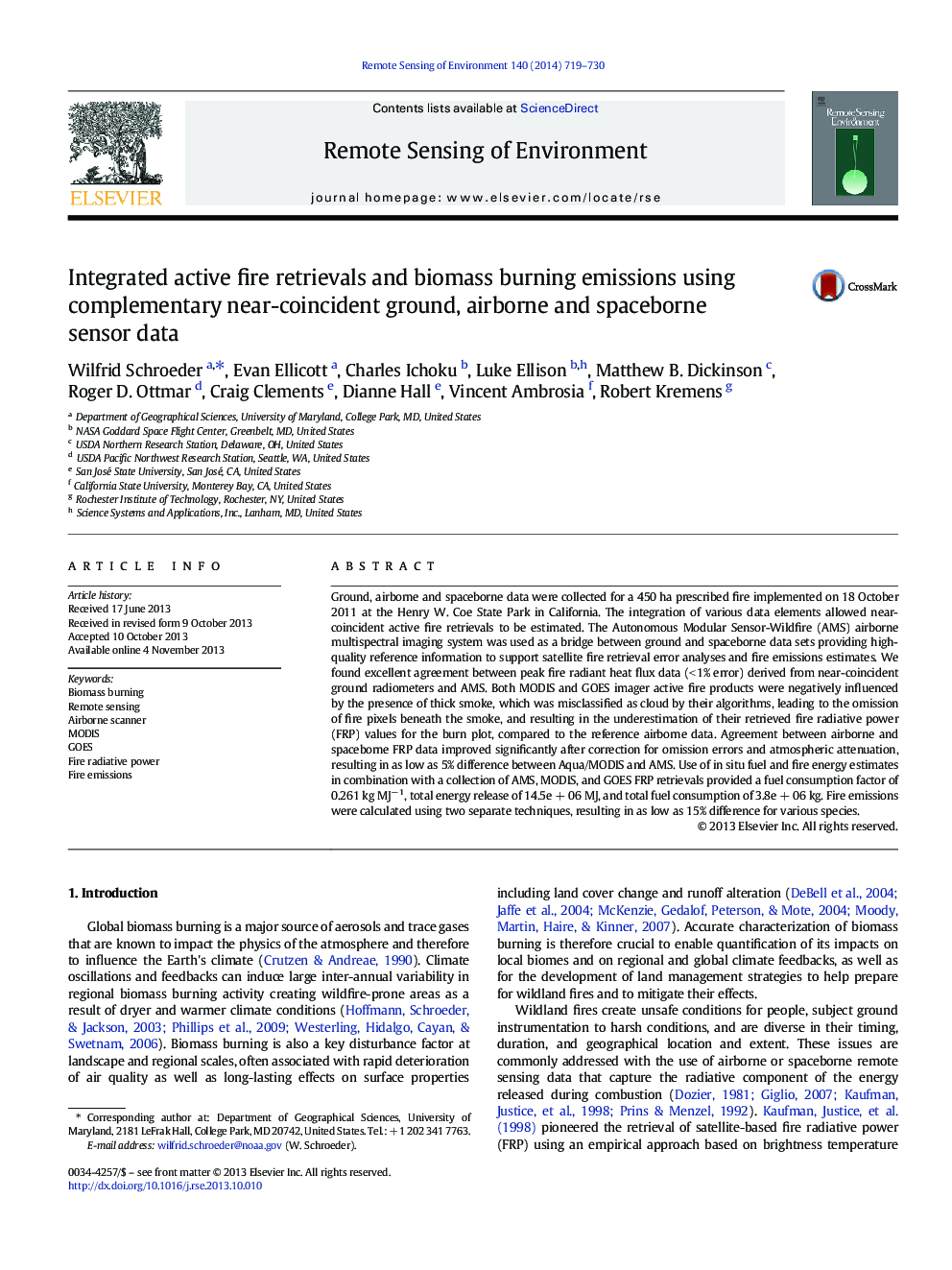| Article ID | Journal | Published Year | Pages | File Type |
|---|---|---|---|---|
| 6347096 | Remote Sensing of Environment | 2014 | 12 Pages |
â¢Ground, airborne, and spaceborne fire retrievals collected for a 450 ha prescribe fire.â¢Ground and airborne fire radiant flux retrievals agreed to within 1%.â¢Integrated fire radiative power retrievals derived from airborne and spaceborne data.â¢Fuel consumption factor of 0.261 kg.MJâ 1, total fire energy release of 14.5e + 06 MJ.â¢Emissions estimates using distinct approaches resulting in as low as 15% difference.
Ground, airborne and spaceborne data were collected for a 450 ha prescribed fire implemented on 18 October 2011 at the Henry W. Coe State Park in California. The integration of various data elements allowed near-coincident active fire retrievals to be estimated. The Autonomous Modular Sensor-Wildfire (AMS) airborne multispectral imaging system was used as a bridge between ground and spaceborne data sets providing high-quality reference information to support satellite fire retrieval error analyses and fire emissions estimates. We found excellent agreement between peak fire radiant heat flux data (< 1% error) derived from near-coincident ground radiometers and AMS. Both MODIS and GOES imager active fire products were negatively influenced by the presence of thick smoke, which was misclassified as cloud by their algorithms, leading to the omission of fire pixels beneath the smoke, and resulting in the underestimation of their retrieved fire radiative power (FRP) values for the burn plot, compared to the reference airborne data. Agreement between airborne and spaceborne FRP data improved significantly after correction for omission errors and atmospheric attenuation, resulting in as low as 5% difference between Aqua/MODIS and AMS. Use of in situ fuel and fire energy estimates in combination with a collection of AMS, MODIS, and GOES FRP retrievals provided a fuel consumption factor of 0.261 kg MJâ 1, total energy release of 14.5e + 06 MJ, and total fuel consumption of 3.8e + 06 kg. Fire emissions were calculated using two separate techniques, resulting in as low as 15% difference for various species.
